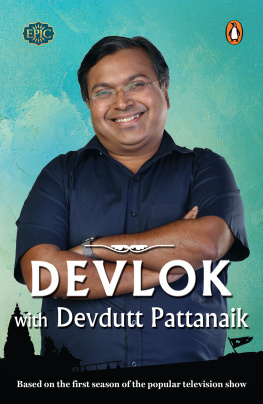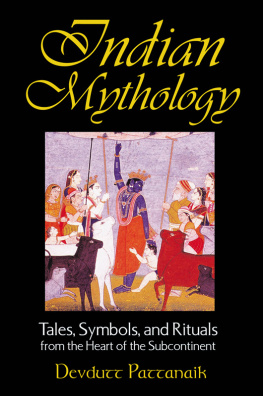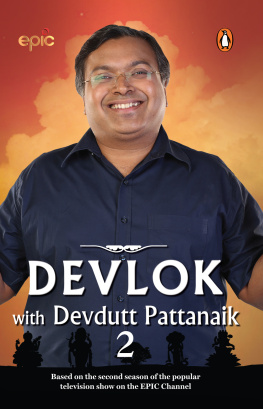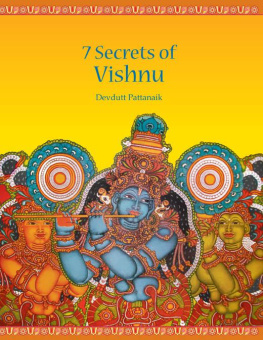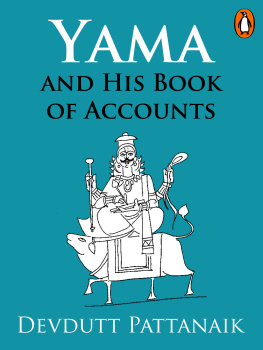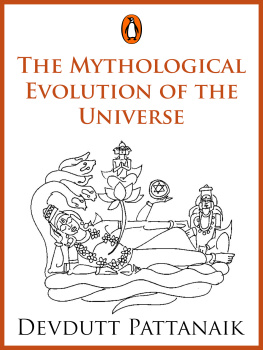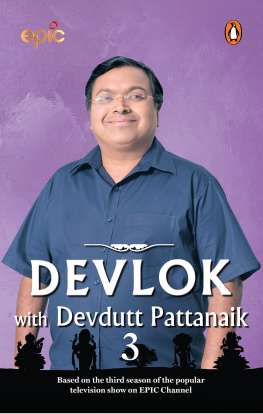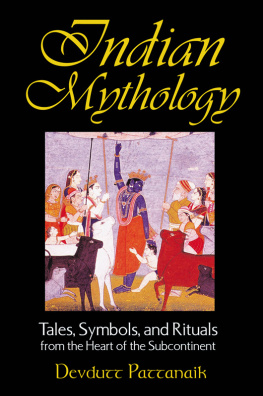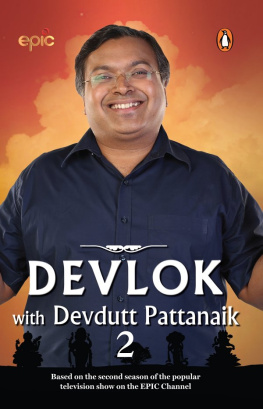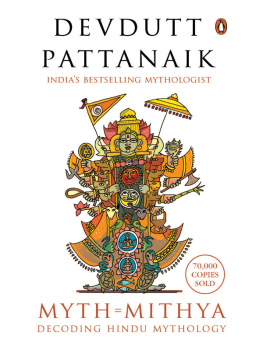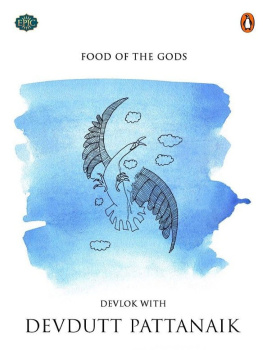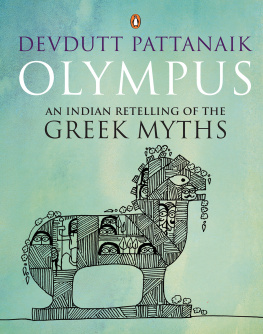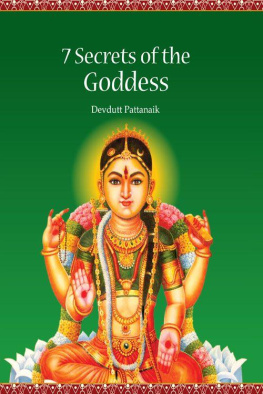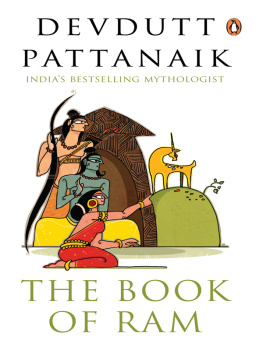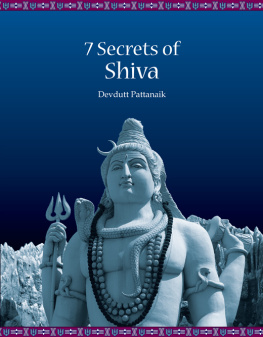Devdutt Pattanaik is the author of over twenty-five books and 500 articles on the relevance of mythology in modern times. Trained in medicine (MBBS from Grant Medical College, Mumbai University), he worked in the healthcare and pharmaceutical industries for fifteen years before devoting all his time to his passion for decoding beliefs of all cultures, modern and ancient, located beneath the veneer of rationality. To know more, visit devdutt.com
1
Holy Texts
There are many granths in Indian Puranic culture, like the Vedas, the Puranas, the Mahabharata and the Ramayana. Which was the first granth?
We should be careful when using the word granth, because granths, or what we call holy texts, came into existence only about 2000 years ago. Before that, there was the oral tradition alone.
The first Veda was the Rig Veda. Perhaps a little later came the Sama Veda and Yajur Veda. And then came the Atharva Veda. So, the Vedas are the first set of oral texts, which began to be transmitted to humans about 4000 years ago.
The Upanishads came 3000 years ago. They are actually explanations. The Ramayana, the Mahabharata and the Puranas were born 2000 years ago in Sanskrit.
Nearly 1000 years ago, poets started writing these in their local languages, resulting in texts such as the Kamban Ramayana in Tamil, the Balram Das Ramayana in Oriya, the Eknath Ramayana in Marathi, the Ezhuthachan Ramayana in Malayalam.
Then we come into the modern age. The Tulsi Ramayana, which was written in Awadhi, is about 500 years old.
What are Upanishads?
Upanishad technically means sit down and talk to me, like a discussion or a chat. It involves inquiry on any subject; what we call mimansa. Specifically, the focus is on the atmathe soul, consciousness, essence, and so on.
The Vedas contain many mantras, detailed rituals and melodies. The Upanishads discuss at length the meaning, the mystery of the Vedas. They are commentaries that emerged out of discussions between rishis, kings, children, men and women, husbands and wives in an effort to unravel the meaning of the Vedas.
The Ramayana and the Mahabharata are in fact these meanings and secrets conveyed in the form of stories.
To sum up, the Vedas (4000 years old) were where ideas perhaps originated. The Upanishads (3000 years old) explained the meaning of the Vedas. The Puranas and the epics (2000 years old) expressed these ideas through stories.
So, Puranic stories have existed for many centuries. Weve heard many stories in the form of geet, songs, many we saw as natak, drama. What came first? Were stories told through song or drama, or have both coexisted from the beginning?
The simple answer is that geet came first. The mantras from the Vedas were chanted. How this chanting was donethe pronunciation, the rhythm, the melodywas very important. The Sama Veda, in fact, focuses on melody, or music.
Gradually, when the Yajur Veda came into existence, these songs, the oral tradition, began to be associated with the rituals and ceremonies of the yagna. That means people started performing, and the yagna itself became an elaborate performance. There were characters with roles and specified lines to be chanted at specific points. Thereafter, people started telling and enacting stories between yagnas to keep others entertained. Thats how natak, drama, began. It immediately gained so much popularity that it became hard to distinguish whether it was part of the yagna or just an interlude. The Natyashastra, the ancient treatise on drama, then became the Pancham Veda, the fifth Veda.
Although there are characters like Indra, Surya and other gods in the Vedas, there are no clear stories, only minor anecdotes here and there. It was in the age of the Puranas, 2000 years ago, when epic poems like the Ramayana and the Mahabharata were composed, that drama formally made its debut. Some say it was introduced by the Greeks who came to India with Alexander. Others say we adopted their practices and merged them with our own version of drama at that time. We draw this assumption from words like the Sanskrit Yavanikaliterally, that which came from Greeceused to describe a stage curtain. It is significant that the famous Srinathji temples in Gujarat and Rajasthan have a Pichwai painting at the back, that functions essentially as a stage backdrop.
About 1000 years ago people began building temples with natyashalas, or theatre houses, inside, where plays adapted from the Ramayana and the Mahabharata would be performed. So along with song and dance, drama too was performed before the gods. The performance in the temples became very important. The theme of the plays would be the birth of Krishna or stories from the Ramayana. What used to be performed in royal courts was now staged in temples. The modern-day Kathakali, for example. With the arrival of the Mughals, however, drama gradually returned to the courts of kings.
The evolution of song and drama truly has a very interesting history.
Did the storytellers create these stories or did they hear them from somewhere? Where did these stories originate?
The word original is very dangerous. There is nothing original in Sanatan Dharma. Ideas come and go, and they return. Like cyclical waves, they rise and fall, and nothing can be termed original.
It is said that when the four Vedas emerged from Brahmas head, they were taken by the asuras and hidden in water. Then Vishnu, as Hayagriva, recovered them from the ocean. Hay means horse. Hayagriva had a human body but a horses head. He searched for the Vedas in the water, and retrieved them after fighting the asuras. This is the story of something that is lost, then found, rediscovered, retold. Who then is the real source of the Vedas? They emerged from Brahmas head, so he can be seen as the originator, but Hayagriva searched and recovered them, so he too can be the source.
This conundrum exists in the storytellers stories as well. Was the Ramayana Valmikis creation or Naradas from whom Valmiki heard it? Or the crow Kakbhusandis who narrated it to Narada? Or Shiva from whom the crow heard it? Why is it told like this? Because nobody knows who the original source is.
Likewise with the Mahabharata. Who knows the exact Mahabharata? Does Vyasa know it? Theres a story where Jaimini goes to Vyasa seeking some answers to the Mahabharata. When he doesnt find Vyasa, he goes to his disciple Vaisampayan. But Vaisampayan has taken an oath of silence so he cant say anything. So what does Jaimini do? There are four birds who answer his questionsthere, you have another route for the source. Is the Mahabharata that which Vyasa narrated to Ganesha? Or is it that which Vaisampayan told Janamejaya? Or what Romaharshan told Ugrasraiva after overhearing Vaisampayan?

